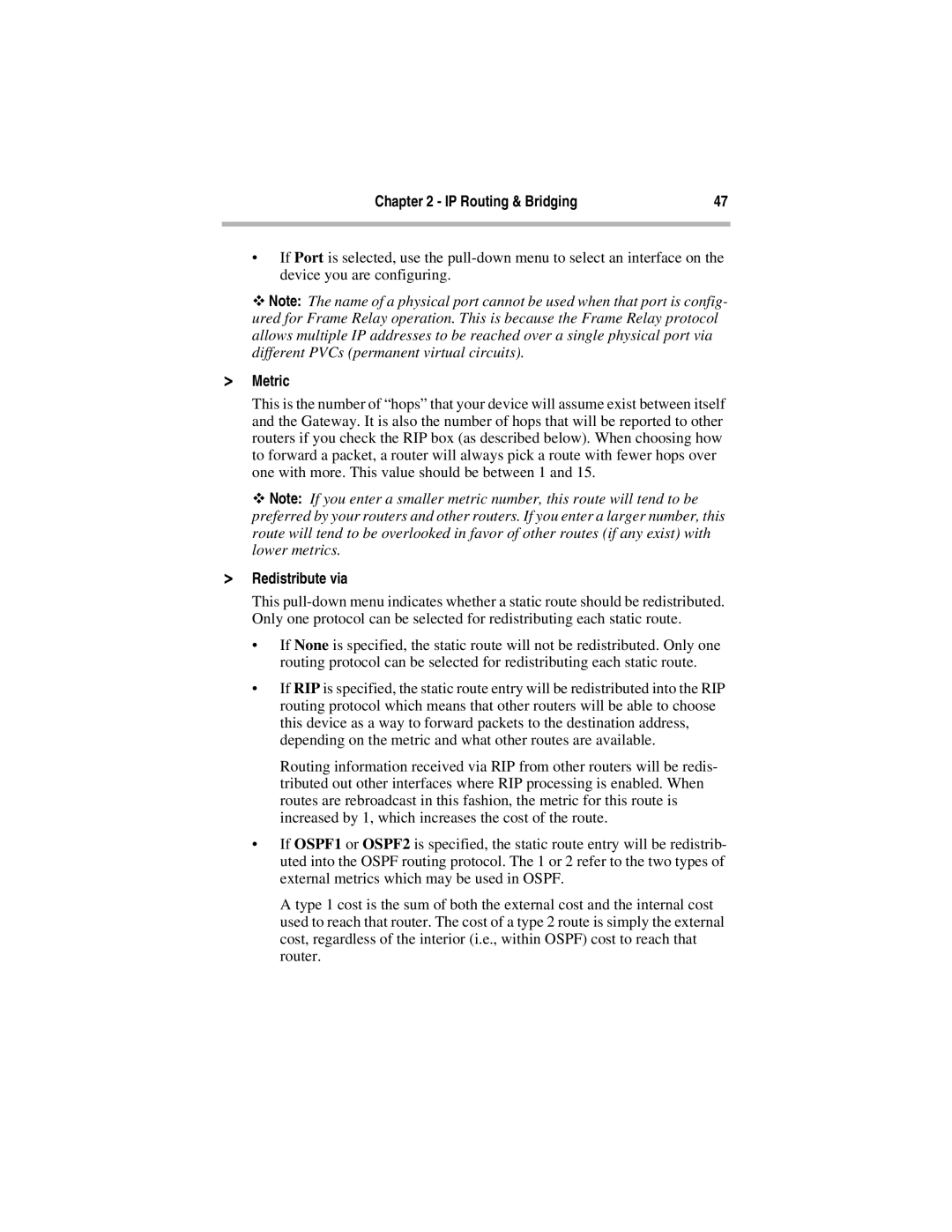Chapter 2 - IP Routing & Bridging | 47 |
|
|
•If Port is selected, use the
ϖNote: The name of a physical port cannot be used when that port is config- ured for Frame Relay operation. This is because the Frame Relay protocol allows multiple IP addresses to be reached over a single physical port via different PVCs (permanent virtual circuits).
>Metric
This is the number of “hops” that your device will assume exist between itself and the Gateway. It is also the number of hops that will be reported to other routers if you check the RIP box (as described below). When choosing how to forward a packet, a router will always pick a route with fewer hops over one with more. This value should be between 1 and 15.
ϖNote: If you enter a smaller metric number, this route will tend to be preferred by your routers and other routers. If you enter a larger number, this route will tend to be overlooked in favor of other routes (if any exist) with lower metrics.
>Redistribute via
This
• If None is specified, the static route will not be redistributed. Only one routing protocol can be selected for redistributing each static route.
• If RIP is specified, the static route entry will be redistributed into the RIP routing protocol which means that other routers will be able to choose this device as a way to forward packets to the destination address, depending on the metric and what other routes are available.
Routing information received via RIP from other routers will be redis- tributed out other interfaces where RIP processing is enabled. When routes are rebroadcast in this fashion, the metric for this route is increased by 1, which increases the cost of the route.
•If OSPF1 or OSPF2 is specified, the static route entry will be redistrib- uted into the OSPF routing protocol. The 1 or 2 refer to the two types of external metrics which may be used in OSPF.
A type 1 cost is the sum of both the external cost and the internal cost used to reach that router. The cost of a type 2 route is simply the external cost, regardless of the interior (i.e., within OSPF) cost to reach that router.
